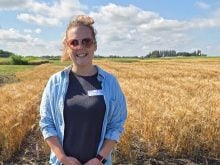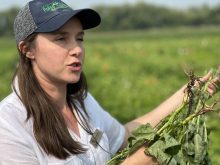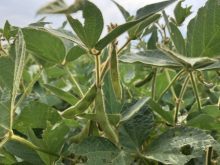A group of indigenous leaders thinks smaller is better when it comes to producing food.
“We’re supportive of community based efforts and good and healthy foods,” said Priscilla Settee, associate professor with the department of native studies at the University of Saskatchewan and co-chair of the third North American Indigenous Food Symposium held in Saskatoon June 4-6.
The conference discussed the loss of traditional indigenous food and how it is threatened by genetically modified crops, the need for organic agriculture and the consequences of the corporatization of agriculture.
Read Also

Fusarium head blight mycotoxin detector in the works
A PhD student at the University of Saskatchewan has been working on developing a method of detecting fusarium damaged kernels to ease the struggles of producers, agronomists and industry.
“I’m very concerned about industrial agriculture, how our vegetables and fruits are produced with massive pesticides and fertilizers and the impact that has on the water and on farming lands,” Settee said.
Joe Munroe, Heifer International’s First Nations field co-ordinator on the Prairies, said the days of commodity farming are over.
“There used to be a lot of bigger farmers on First Nations and then they all went the way of the dodo in the early part of this decade,” he said.
A case in point is Munroe’s reserve, the Muskoday First Nation.
“We have 22,000 acres and we farmed it all, every single acre. We had six or seven huge farmers.”
Today, almost all of that land is leased out except for one quarter section that is farmed by the Muskoday Organic Growers Co-operative Ltd., which grows certified organic potatoes and vegetables.
Munroe said larger farmers have been forced out of the industry by inequitable federal subsidy programs.
First Nations prepaid their taxes through the treaties, but because they are tax exempt, they are also prevented from getting subsidies, he added.
The Saskatchewan Indian Agriculture Program that used to provide offsetting subsidies no longer operates.
“It’s not a level playing field when the white farmer next to me is getting a subsidy from taxpayers to help with his input costs and machinery costs and I’m not,” Munroe said.
He believes sustainable, niche farming, such as the organic co-op in Muskoday, is the only viable option.
Settee said a return to traditional forms of agriculture will have the spin-off benefit of helping combat the growing First Nations health problems of diabetes, obesity and heart disease.
“In our communities particularly, the food related problems are immense,” she said.















